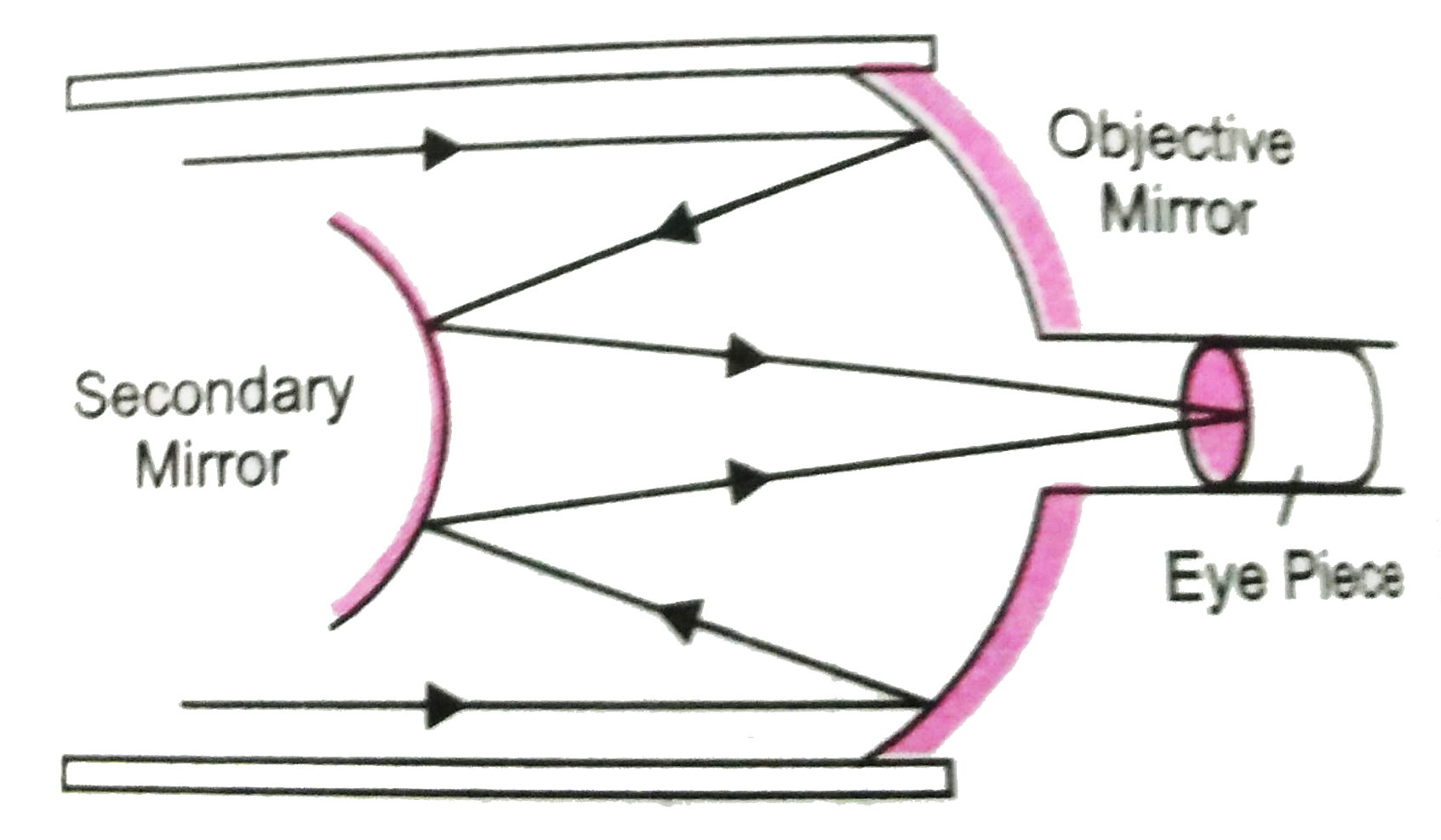In a Cassegrainian telescope, ……………………. is a large concave mirror.
Video Solution
Text Solution
objective mirror
|
Updated on:21/07/2023
Topper's Solved these Questions
- BOOK - MODERN PUBLICATIONCHAPTER - RAY OPTICS AND OPTICAL INSTRUMENTSEXERCISE - Revision Exercises (Short Answer Questions)43videos
RAY OPTICS AND OPTICAL INSTRUMENTS
- BOOK - MODERN PUBLICATIONCHAPTER - RAY OPTICS AND OPTICAL INSTRUMENTSEXERCISE - Revision Exercises (Long Answer Questions)20videos
RAY OPTICS AND OPTICAL INSTRUMENTS
- BOOK - MODERN PUBLICATIONCHAPTER - RAY OPTICS AND OPTICAL INSTRUMENTSEXERCISE - Revision Exercises (Additional Questions)22videos
RAY OPTICS AND OPTICAL INSTRUMENTS
- BOOK - MODERN PUBLICATIONCHAPTER - NUCLEIEXERCISE - CHAPTER PRACTICE TEST FOR BOARD EXAMINATION15videos
NUCLEI
- BOOK - MODERN PUBLICATIONCHAPTER - SEMICONDUCTOR ELECTRONICS METERIALS DEVICES AND SIMPLE CIRCUITS EXERCISE - CHAPTER PRACTICE TEST FOR BOARD EXAMINATION12videos
SEMICONDUCTOR ELECTRONICS METERIALS DEVICES AND SIMPLE CIRCUITS
Similar Questions
Knowledge Check
- Question 1 - Select One
Define the principal focus of a concave mirror.
ArealBVirtualCundefinedDat the pole - Question 2 - Select One
The image formed by a concave mirror
ArealBvirtualCmagnifiedDAll of the above - Question 3 - Select One
The aperture of a telescope is made large, because
ATo increase the intensity of imageBTo decrease the intensity of imageCTo have greater magnificationDTo have lesser resolution
In Cassegrainian telescope, objective lens is………by………… .
View SolutionCases For Concave Mirror|OMR
View SolutionRay diagram for Concave Mirror
View SolutionA reflecting type telescope has a large concave spherical mirror of radius of curvature 80cm as objective. What is the magnifying power of telescope if eye piece used has a focal length of 1.6cm ?
View SolutionA Cassegrainian telescope uses two mirrors as shown in Fig. Such a telescope is built with the mirrors 20mm apart. If the radius of curvature of large mirror is 220mm and the small mirror is 40mm, where will the final image of an object at infinity be ?
 View Solution
View Solution

